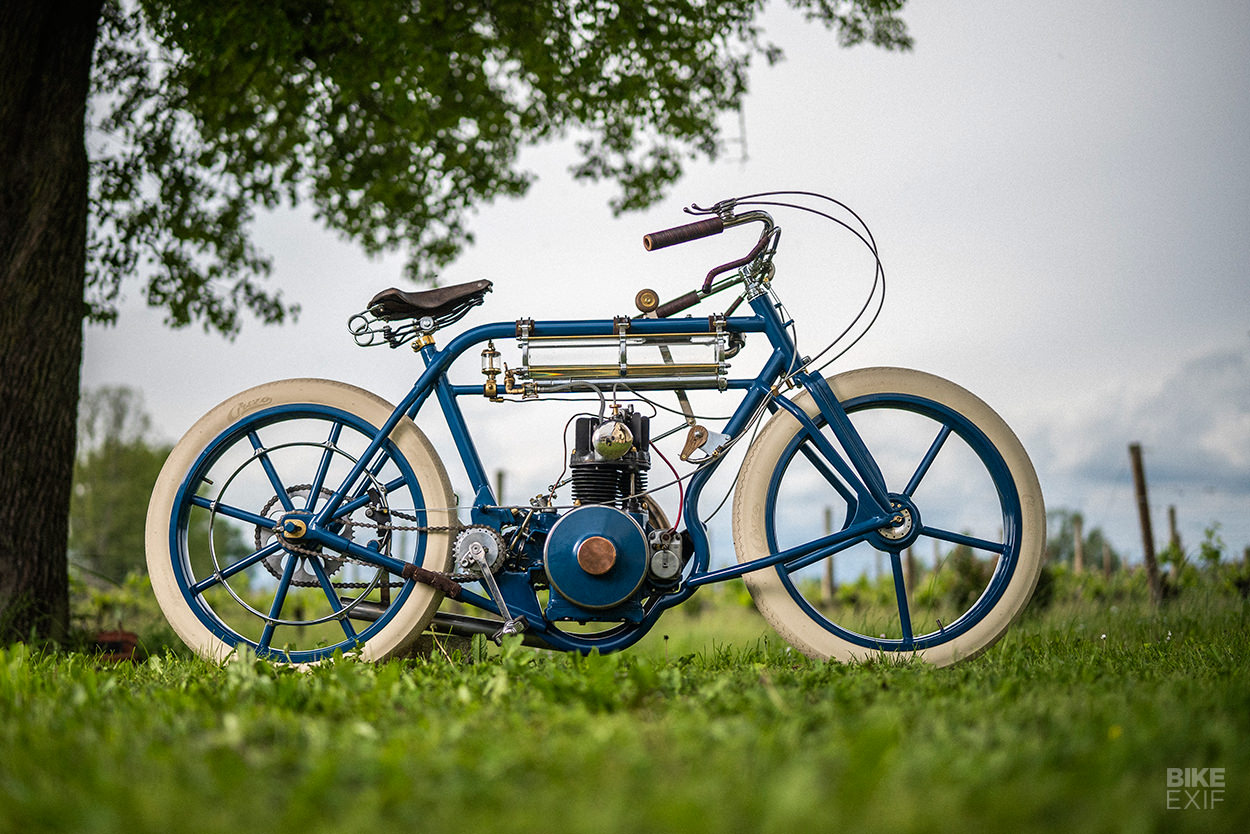
A huge part of the custom scene is making modern motorcycles look older. Removing plastics, softening angles, fitting things like spoked wheels and simple mufflers.
Take that trend to the logical extreme, and you have a custom like this one. It looks like it’s a century old, but it’s only just been built. It comes from the astoundingly talented Alessandro Rorato—a 39-year-old model-making specialist from Veneto, Italy.
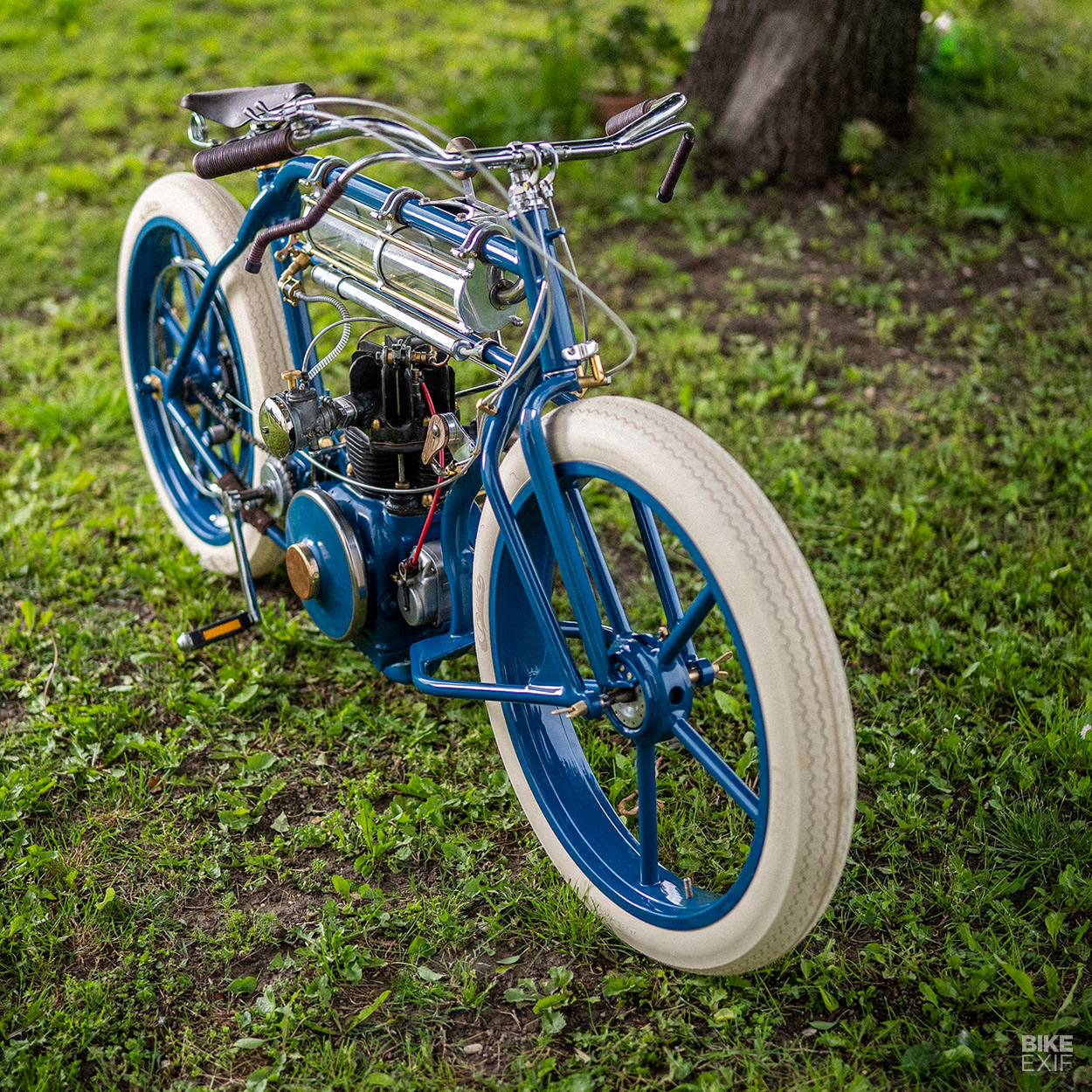
To understand the bike, you often need to understand the man. Alessandro showed an aptitude for building things from a very early age, while plundering materials from his grandfather’s workshop. As a youngster, he built not one but two racing cars—powered by motorcycle engines.
After completing his education at the Italian Design School in Padua, he began working on vintage bicycles and motorcycles, set up Plasma Custom, and moved back into his grandfather’s blacksmith’s workshop.
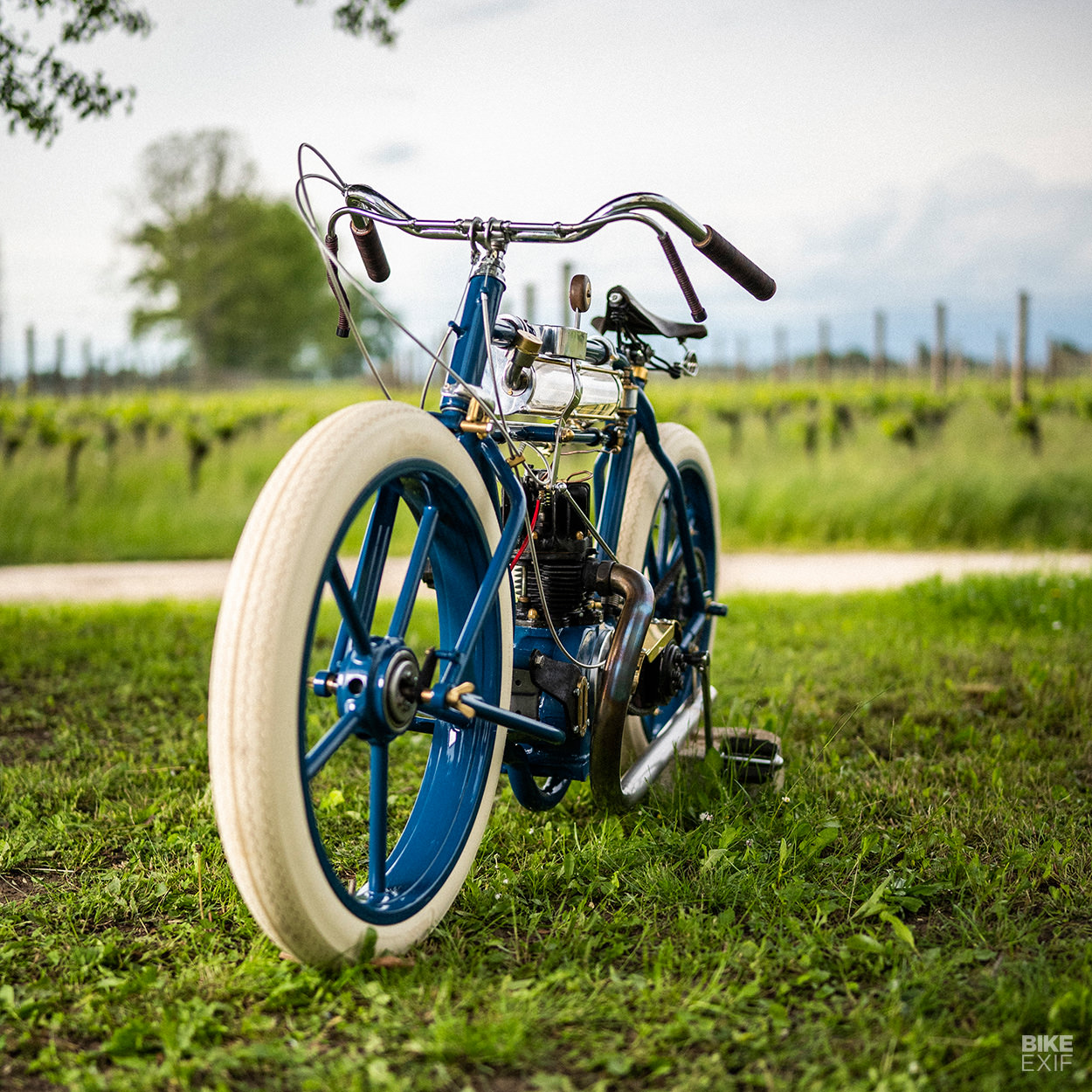
So you could say it was almost inevitable that he would build a machine like this. He can weld, paint and use a lathe—and also call on modern techniques such as 3D modeling when necessary.
“For this project, I was inspired by the motorbikes and cars of the 1920s,” he says. “So I made the frame out of steel tubes, and the 24-inch rims were made by welding aluminum tubes to aluminum hubs.”
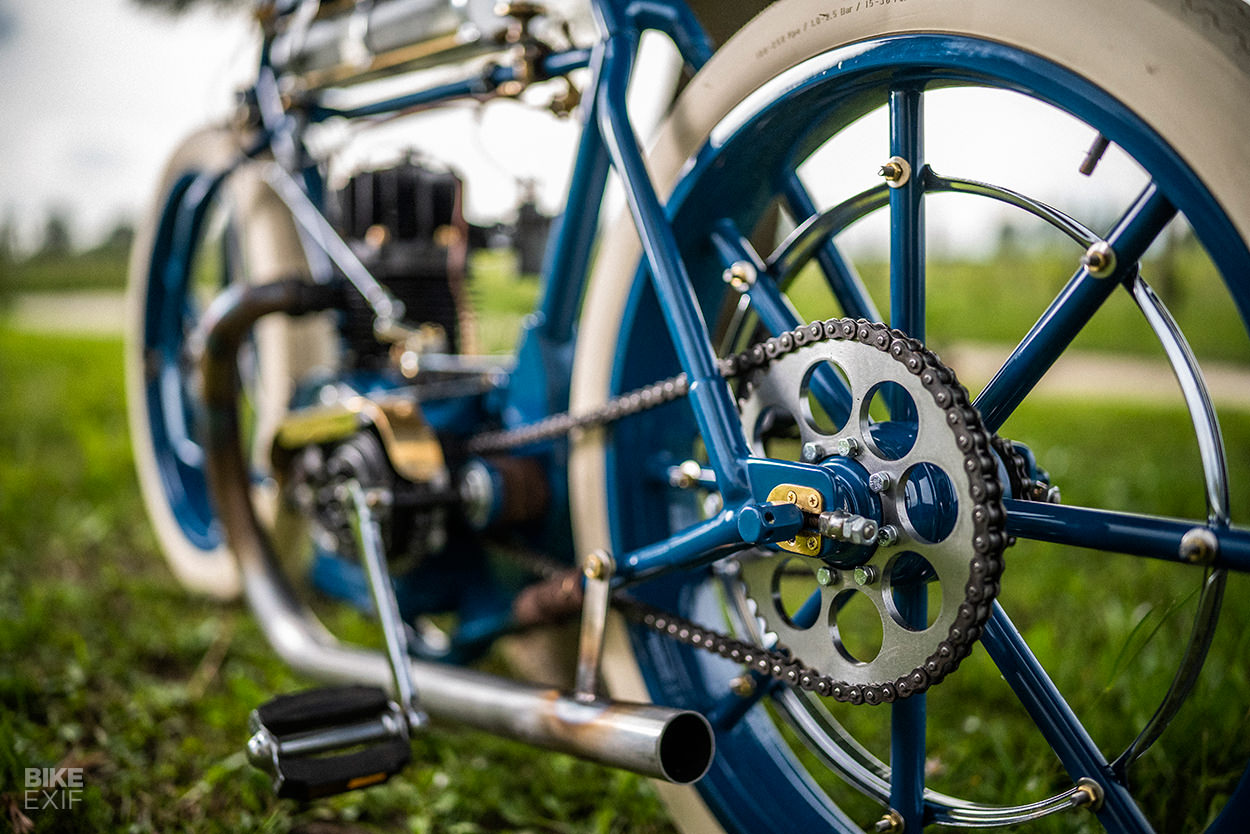
Alessandro turned the hubs from solid aluminum, and then precision-drilled them to insert the aluminum spokes. “The rear hub has two ball bearings and a freewheel for starting. For the rear brake I used a chromed drum ring and built the rubber pad and operating system by designing it in 3D.”
The front end has a much more contemporary inspiration: Alessandro points to the hub-center steering system of the Bimota Tesi superbike. “I made all the parts on the lathe, from solid billet,” he explains. “The wheel turns on a steering hub via a central pivot; rotation of the steering takes place via a tie-rod connected to the handlebars.”
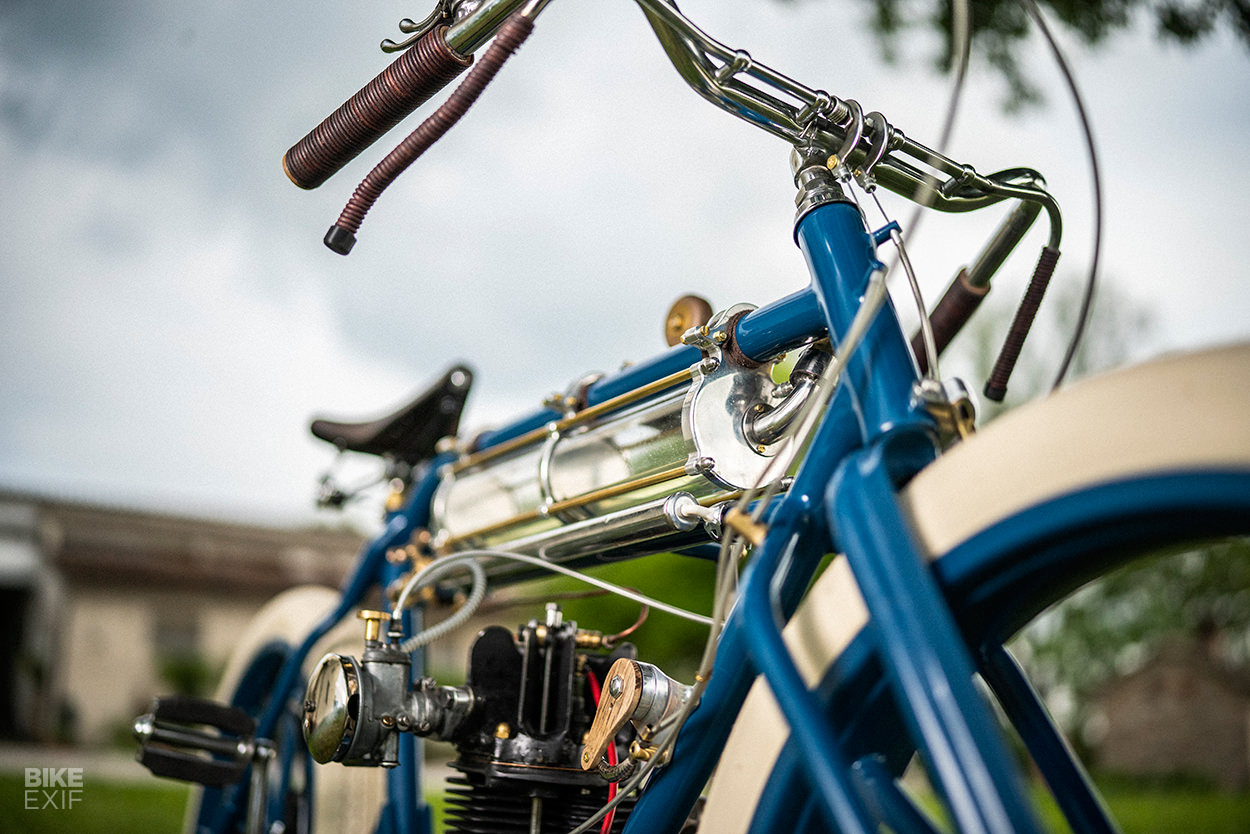
The bars were sourced from the Philippines, and were modified and chromed before being installed. There are two levers on the bars: one acts as the throttle, and the other to modify the ignition advance to make it easier to start the engine.
Hanging under the top frame tube are two 80mm Pyrex fuel cylinders joined together by CNC’d aluminum brackets. Further back is a 1950s Brooks leather saddle, and underneath is a very obscure engine.
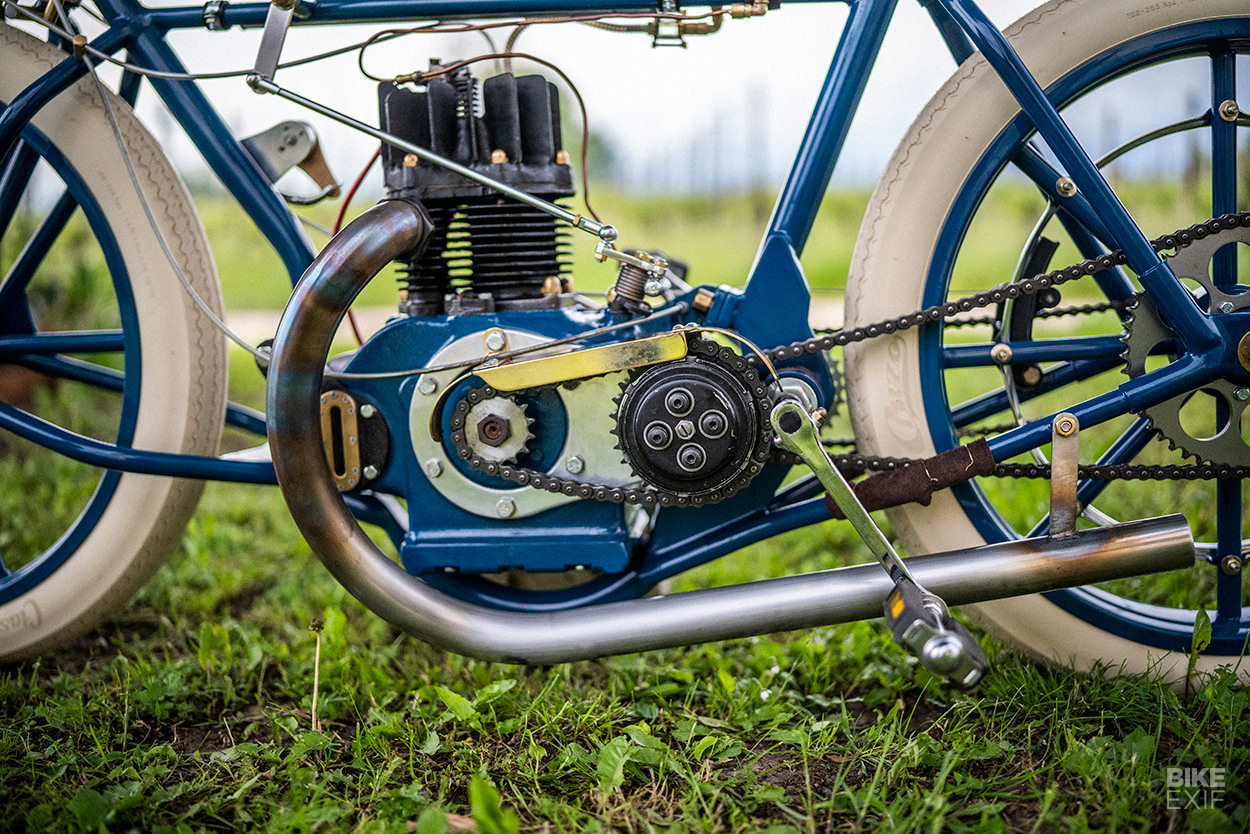
“The 350cc engine has a modified Lombardini LA65 crankcase,” says Alessandro, who got it from a local farmer. He designed and built most of the rest, though. “The head and cylinder are made of cast aluminum with an intake and exhaust system called IOE.” [That’s ‘intake/inlet over exhaust,’ otherwise known as an F-head.]
The lubrication system is a drip-type. “I used a Pyrex drip tray, and with copper and brass pipes worked on the lathe, I created the oil distribution— which first lubricates the valve rocker, then goes into the motor body,” says Alessandro.

The pedals are used to start the engine, as in some 1930s motorcycles. “You engage the gear, you pedal, and then the engine starts,” says Alessandro. Semplice!
The exhaust system is stainless steel, and started life as a swimming pool ladder, of all things. (“I heated it and changed the curvature until it was perfect.”)
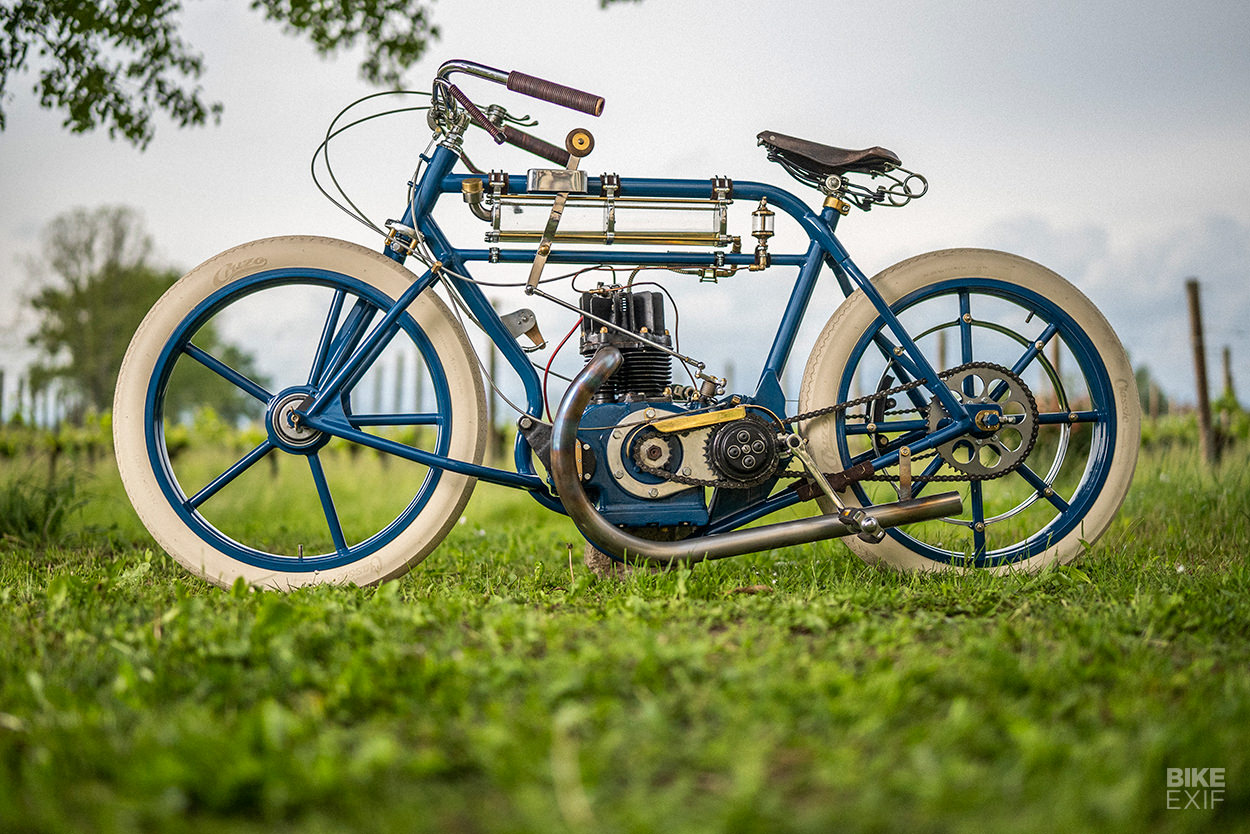
The transmission, despite being a single-speed, was a lot more complex. “I built the gearbox myself, starting with a Minarelli 125 dry clutch. Then I made the gear release, inserted via an external lever, and it’s all mounted in a CNC-machined aluminum casing.”
We’re not sure if this machine is road legal, but it looks perfectly usable as a commuter. Or for pottering around picturesque villages on the Adriatic coast. Who needs traction control or ABS?
Plasma Custom Facebook | Instagram | Images and video by Al Bruni